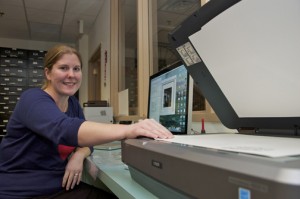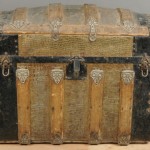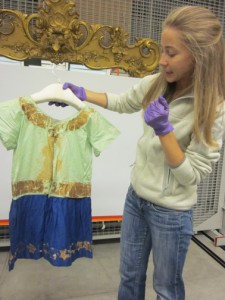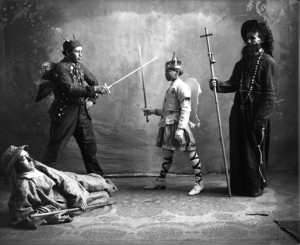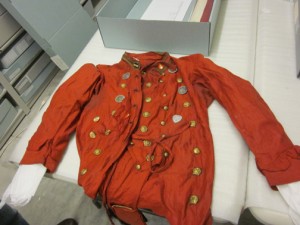Ask most of us why we work here and “I love history” is sure to be one of the top three reasons. That goes double for Lauren Gray, an intern in the Palace of the Governors Photo Archives, former intern in the Fray Angélico Chávez History Library, and recent graduate of the University of New Mexico’s master’s program in U.S. history (with an emphasis in Colonial History and a secondary in Medieval and Early Modern Europe).
Since January, Gray has been working as part of a three-year grant to digitize and preserve the photo collections. She has fastidiously and meticulously scanned and archived thousands of photographs, bringing an acute attention to detail, careful handling of fragile photographs and the ability to organize large amounts of data to the job. Her efforts play a very important role in bringing the Photo Archives into the digital age and allowing the public to view photos wherever they happen to be on planet Earth.
Her biggest challenge? Learning how to use new software and restoring old photographs that have been badly damaged by time. “It’s extremely frustrating to see history deteriorating right in front of you,” she said while scanning a pinhole photograph. “But it’s also really rewarding to be able to preserve these artifacts and even restore them.”
Gray’s appreciation for the museum extends beyond the northeast corner of our campus. Her favorite exhibit was Fashioning New Mexico, the inaugural changing exhibition in the Herzstein Gallery when the museum opened in 2009. “I love tactile things and anything that brings history alive in an interactive and intriguing way.” (See the interactive web version of the exhibit here.)
Her favorite event is the Santa Fe Mountain Man Trade Fair because “mountain men are unique to American history, and it’s fascinating to see people keeping the tradition alive.”
Just how deep is her love for the History Museum? In September, Gray and her fiancée, Christian, were married in the Palace Courtyard. The couple shares a love of history and wanted to make a lifelong commitment there, Gray said, because of its long and diverse history and its beauty – a perfect fit for a happy marriage.

